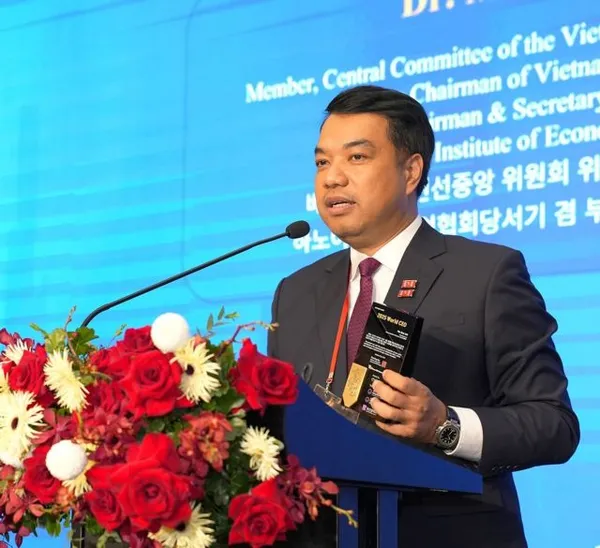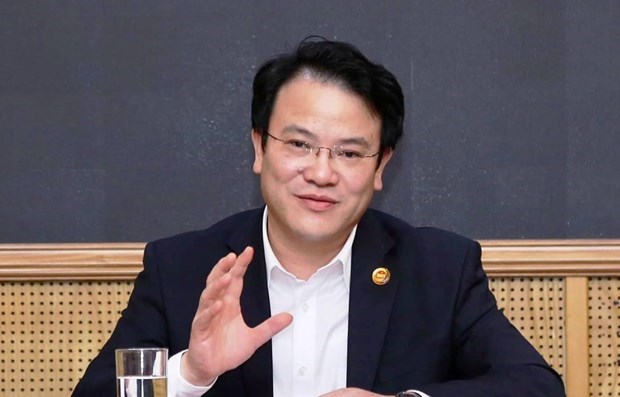 Talking Shop
Talking Shop

 |
| Deputy Minister of Planning and Investment Trần Quốc Phương |
Việt Nam's economy showed signs of positive recovery in August with many economic indicators maintaining growth against previous months. However, the economy still faces many difficulties both at home and abroad, putting great pressure on achieving economic growth for this whole year.
Deputy Minister of Planning and Investment Trần Quốc Phương spoke to Vietnam News Agency about solutions that are implemented until the end of the year to reach the economic growth target.
Việt Nam's economy has had a positive recovery but, in general, the socio-economic situation from now until the end of this year has more disadvantages than advantages. So, is the economic growth target set for this year too high?
The world economy faces many headwinds, especially the impact of prolonged geopolitical conflicts and increasing competition among major countries; risks in global monetary and financial markets, and risks to energy and food security.
Although global prices, inflation, and interest rates tend to gradually cool down, they are still at high levels. While, the financial and monetary risks are increasing to make the global economic recovery process slower than expected. Those factors negatively affect the export, investment, consumption, tourism and market of Việt Nam.
The challenges caused Việt Nam's GDP in the first half of 2023 to grow by 3.72 per cent on year, lower than the Government's target.
If Việt Nam does not reach the economic growth targets, that result will affect the implementation of the five-year socio-economic development plan from 2021 to 2025 and also the ten-year socio-economic development strategy from 2021 to 2030.
Achieving the economic growth targets for this whole year is extremely difficult. Because, if Việt Nam wants to achieve a GDP growth rate at 6.5 per cent for 2023, the rate must be about 9 per cent for the second half of the year.
Besides that, the industrial sector – the main factor of Việt Nam's economy – has been most affected by the existing difficulties.
The reduction of global demand has affected import-export activities as well as the production and business of domestic enterprises. Most large enterprises in the fields of processing, manufacturing and electronics have depended on the consumption of major economies, but the consumption is decreasing.
At present, the agricultural sector continues to be a very important pillar with stable growth, together with the strong recovery of the tourism and service sectors. These two fields have supported the industrial sector a lot in the overall structure of GDP growth.
What challenges and opportunities will Việt Nam face in the last months of this year?
The US Federal Reserve (Fed) and the European Central Bank might start to slow the pace of interest rate hike after many consecutive rises. This is expected to promote economic growth.
Besides that, there are signs that spending is gradually increasing, though the global aggregate demand is still low. Businesses have orders again, although in a small volume.
The businesses should also take advantage of new generation free trade agreements (FTAs) to have new export markets, besides seeking more business opportunities in traditional export markets.
The shift of global investment flows could also bring many opportunities for Việt Nam to lure more foreign investment.
International experts and organisations have had positive assessments of Việt Nam. It is always on the list of destinations for investors when they consider expanding investment or putting in new investment. This is an advantage for Việt Nam to attract large investors in the current difficult context.
What are the solutions to achieve the economic growth goal?
In the last months of the year, it is necessary to further promote the growth drivers, including consumption, investment, and export. It also needs to maintain macro-economic stability, control inflation, and ensure social security.
In particular, it is necessary to focus on drastically implementing solutions to promote the disbursement of public investment capital and the programmes of socio-economic recovery and development.
Ministries, sectors and localities need to solve legal problems in a prompt and effective manner, focusing on the stages of project preparation and site clearance.
It is also necessary to continue to closely monitor forecasts on the international economic and financial-monetary situation, thereby having a timely response plan and improving the effectiveness in coordination between monetary policy and other macro policies to maintain macro-economic stability, control inflation and support economic growth.
Another very important solution is institutional reform to create new policies for economic development.
First of all, it is necessary to accelerate the improvement of institutions, including mechanisms and policies on removing the existing obstacles and building a legal corridor for digital economy development, new business models, green economy and circular economy.
Along with that, we must reduce and simplify administrative procedures, and cut business conditions.
Continuing to review, amend and supplement a number of mechanisms and policies relating to production, business and investment is necessary to remove difficulties and promote socio-economic development.
The Government has recently issued Resolution No. 105/NQ-CP on removing difficulties for enterprises, focusing on boosting administrative reform to improve further the business and investment environments.
Resolution No. 105/NQ-CP has set a priority target to promote the economic growth in the context of maintaining macro-economic stability and controlling inflation.
Now, inflation is controlled effectively, creating a good foundation to achieve the goal of promoting the economic growth.
The Resolution No. 105/NQ-CP with five groups of solutions is expected to contribute to achieving the economic growth target for this year. — VNS